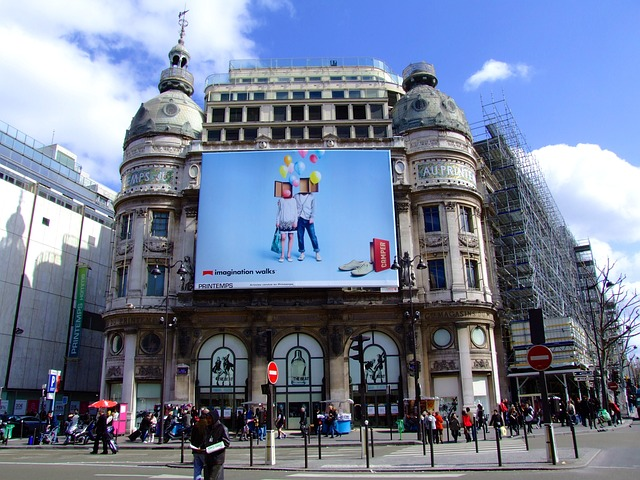
I have noticed a rise in promoting Out Of Home (OOH) advertising, which largely refer to billboards, however could include other activities driven by promotional teams.
The trouble as a marketer is “how do we measure such activity?”
There are three things to consider when looking at measurement:
- How many people that engage with the channel go on to buy?
- What is the uplift of doing this activity?
- How does this channel fit within the marketing mix & work with other channels?
These three lenses give different perspectives of how the ads perform, so lets look at each of these individually.
How many people that engage with the channel go on to buy?
Direct channels are often favoured by people who like to see the clear link between activity & sales. I.e. I send x number of catalogues, or serve y digital impressions; and that leads to a certain number of sales.
When it comes to OOH, often there is not a clear link to an individual seeing that ad, and then buying.
How to overcome this will depend very much on your brand.
For example, if you are a fast-food chain like Mc Donalds, and there was a bill board at the end of your road, you could:
- Look at traffic over a given period in the area
- Note the direction of travel and how many people move into the store
- You can then estimate the number of orders which were generated by those that came from that channel
Whilst this does not work at an individual level; it does give you an idea of: Ad impression to purchase rate. Another example, would be to run promotional activity alongside an event. In Christmas 2023, Kate Spade did this by sponsoring a Christmas tree in Waterloo station. Whilst the tree was up for several weeks on a few chosen days there was also promotional teams giving away free Candy canes, if you sign up with a QR code.
By capturing the email address, then we can see:
- How many existing customers have seen this display
- How many new customers were generated
- How many existing customers bought – was there an uplift
You can also extend this, to look at how far people would come to see the display. This helps when measuring uplift, as we have a defined number of postcodes to measure (see postcode uplift section of this post).
Whilst the promotional activity was only run for a few days, we can then use other data sources like journeys per day over the period the tree was up; to scale up results to represent the “full” impact.
A list of opted in people is an additional bonus.
What is the uplift of doing this activity?

Uplift is a different question altogether, and brings new potential for measurement.
Brands with non- direct to consumer sales approaches, think Shampoo, will not have a direct link from advertising to purchase; so they have to look at when they spend more advertising money, do they get more sales back?
Brands with a more considered purchase (like furniture), a delayed purchase (think insurance) or certain brand equity (think Dior), will often have to look at non-sales metrics to show the impact of marketing supports the brands; which will then (hopefully) lead to sales.
The advantage of measuring uplift in this way, is that it (should) give assurance that there is a return on the marketing spend. Where as if we simply say “this person saw and ad & bought” we don’t know if they would have bought anyway or were responding to other advertising.
When it comes to out of home, the typical ways of measure uplift are through a postcode analysis or a survey.
For a postcode analysis, you would deploy your OOH advertising to an area and define a catchment zone; where it is a reasonable assumption that people will have seen it (this is where the Kate Spade blend of promotional activity was great as we can then better define the post code catchment area).
Then we can find a similar area, so a town/city/county, which has a similar demographic profile & a similar spend profile with your brand.
Then we can compare the sales revenue from those two postcode areas and measure the overall incremental sales in that period. This will only work if the uplift in sales is significant enough – which means the OOH has to be really impactful.
The other option is surveys, surveys can be asked at many times in many ways:
- On the street near your store
- At point of purchase
- To a random sample of people in brand tracking surveys
You can ask if the consumer recalls the bill board (and recalls the ad), if that was a driver to buy, or you can simply ask if they have been to that area.
Then you can compare sales rates from those that have and have not seen the ad. So to summarise the two main methods suggested to measure uplift would be to do comparative postcode analysis or surveys.
How does this channel fit within the marketing mix & work with other channels?

Marketing mix is usually worked out in one of two ways:
- Marketing Mix Modelling
- Digital attribution
(There are other approaches, like agent-based modelling or Monte-Carlo simulations – however these are not common.)
Marketing Mix Modelling looks at the difference in sales over a period of time as a function of your marketing spend over that period. It is in essence similar to the uplift approach described above, the main difference being:
- It uses time as a main differentiator to measure uplift
- It includes all channels & other factors like seasonality
In the case of the Kate Spade promotional activity above, they may find that the uplift in the waterloo campaign does not feature in the model. This is because:
- It only impacts a cohort of customers living in the area/passing
- It could be a relatively small spend, so missed
- The modeller could assume that the uplift in sales is driven by seasonality and not the ad (as they will only have the time splits to hand)
This is where is it important to have the post code analysis at hand, as you can pass that to the modeller to “bake in” to the model. This is an acceptable way as it is based on empirical evidence of uplift.
For those using digital attribution approaches, the opportunities of technology like QR codes can create new seamless experiences which also help link browser data with OOH exposure.
For example, a furniture or tech company can have a small store with only 1 example of each product and a QR code.
The QR code can connect people to the product pages on the ecommerce website, whilst embedding standard UTM parameters.
This activity will then utilise standard digital tracking, with a new OOH touch point included within the mix. The approach can be adapted to any form of OOH or even other physical media like press ads.
Impact of AI
Nowadays it is important to ask the AI question: “Does AI or Machine learning make it possible to track”.
For these cases it is important to note that any tool will only analyse the data that is has. When you hear quotes like generative AI will fill the gap; it means it will make assumptions or build a model; the challenge is you will not know what assumptions or what model.
It is therefore important that you create the testing structure with the right data capture to ensure you have the correct data points. After that point you can use a modelling tool to quantify the difference; or you can just read the difference yourself!
It is also important to consider how this model & output will be used:
- Does it help you plan future campaigns
- Can you measure the specific campaign historically
- How will this compare to or be used with other reports/sources of truth.
Inevitably, you need to align teams around these data points, this usually means agreeing you can measure the impact of one channel, whilst also having an approach to align other things.
So, there you have it! Lots of different ways to measure OOH and understand the impact of the marketing mix.
The combination of technology and marketing can help track these previously “untrackable” solutions to ensure the right level of impact.
If you are struggling with your channel measurement or understanding your overall marketing mix, or want to understand more about any of the topic in the above then do reach out.
(Note: we do not work with Kate Spade, however have made assumptions on how they have or could use the data they have collected).

